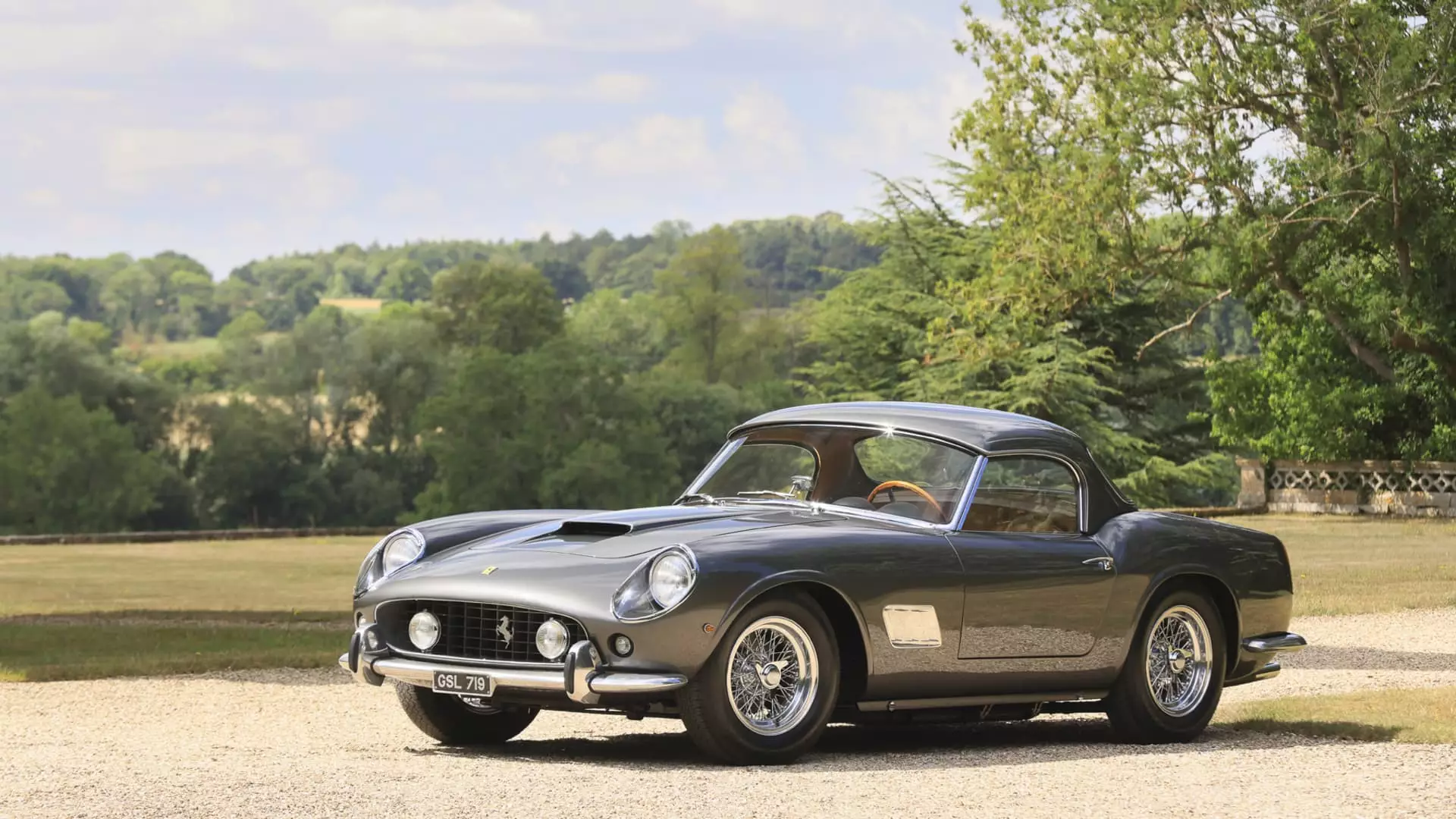The recent frenzy at Monterey Car Week once again underscores how the allure of vintage automobiles is more about social signaling than genuine passion or investment stability. As hundreds of millions of dollars are tossed around for relics from a bygone era, it becomes evident that the market’s narrative is driven less by authentic appreciation and more by the desire for status and exclusivity. Wealthy collectors, eager to showcase their affluence, fuel a cyclical bubble that increasingly reveals its fragility. What might appear to be a parade of historic beauty is, under scrutiny, a reflection of collective insecurities, superficial tastes, and a conspicuous display of affluence that may not age well.
The escalating prices often mask underlying vulnerabilities. The obsession with rarity—be it a Ferrari 250 GT California Spider or a modern Pagani—creates a speculative environment where the value may be entirely disconnected from the cars’ intrinsic qualities. As the market cools, it is the illusion of timeless figures and historical significance that’s being challenged. The downturn in high-end sales signals that these luxury collectibles are increasingly perceived as assets for show rather than genuine drives of passion or long-term value. Instead of genuine enthusiasm, the market seems to be spinning a web of prestige for the wealthy—one that risks unraveling as buyers hesitate and prices dip.
The Generation Gap and the Commodification of Nostalgia
A deeper, more unsettling trend is at play—one rooted in generational shifts that threaten the very foundation of the classic car industry. Baby boomers have long been the primary custodians and consumers of vintage cars, but as they age, they are increasingly eager to pass their collections onto heirs less interested in vintage collectibles or content to sell at a discount. This rotation reveals a shift from a nostalgic, passion-driven market towards one driven by transactional motives. Younger generations—millennials and Gen Z—are entering the scene, but their preferences couldn’t be more different.
Instead of venerating cars from the 1950s or 1960s, they gravitate toward more recent models—particularly from the 1980s and 1990s—that offer not only affordability but practicality. This shift exposes a troubling trend: the commodification of nostalgia, where collectible cars become more about surface value and less about the emotional or historical resonance of the vehicles. The diversification of taste is inevitable, but it highlights a potential dilution of what it truly means to collect and cherish automobiles. The once romantic idea of owning a vintage masterpiece now feels overshadowed by a pragmatic approach—buying to enjoy, not to preserve history.
Supercars and the Rise of a New Collecting Ethos
In stark contrast to the declining prices of vintage classics, the modern supercar market is booming, driven predominantly by younger collectors willing to pay significant premiums for cars from the 1980s onward. The allure of these vehicles isn’t rooted in their historic value but their exclusivity, brand cachet, and the thrill of owning something that feels more accessible and manageable for daily use. The transformation of demand—favoring models like the Porsche 959 or the contemporary Paganis—demonstrates how the landscape of collecting is being reshaped, shifting away from the legendary but often impractical “old-timers” to more contemporary, high-performance machines.
However, this also raises questions about the speculative nature of recent sales, especially for highly exclusive modern supercars like the Ruf CTR “Yellowbird.” The fact that prices are mounting for vehicles that—by any traditional standard—are still relatively recent suggests that the market might be veering dangerously close to a bubble. The key issue lies in the obsession with rarity and the assumption that prices will perpetually rise. The danger here is a superficial form of collecting, where the value is based more on hype, trendiness, and the unspoken hope of flipping cars rather than genuine appreciation or lasting cultural significance.
The Hidden Cost of Collectibles as an Investment
This rapid escalation in prices—particularly among modern supercars—lacks a critical analysis of sustainability. While proponents tout these assets as diversified investments, their true nature is more akin to speculative ventures than traditional forms of wealth preservation. The obsession with high-margin transactions, especially private sales that often remain hidden from the public eye, hints at a market increasingly driven by ego, secrecy, and the desire to evade scrutiny. With many wealthy individuals attempting to avoid revealing discounted selling prices, the transparency of the market diminishes, leaving behind a distorted perception of value.
Moreover, the global geopolitical and economic uncertainties—wars, slowing economic growth, rising interest rates—cast a shadow over this glittering industry. Collectors are weighing the opportunity costs of tying up wealth in depreciating assets, yet many continue to chase perceived status symbols, blinding themselves to the risks of market correction. This disconnect amplifies a fundamental flaw in the modern collecting ethos: valuing symbols of wealth over genuine cultural or personal significance.
The Cracks in the Illusion: An Evolving Market or a House of Cards?
Ultimately, the shift from old versus new, classic versus modern, reveals a market rife with contradictions. The decline in vintage car prices—by as much as 30% from recent peaks—exposes its vulnerability, especially as older collectors exit or pass away. Meanwhile, younger collectors’ focus on more attainable, practical vehicles signals a seismic cultural transformation that may not favor the traditional notion of collecting for lasting value.
This evolving dynamic invites skepticism. Are these markets genuinely mature or just the latest chapter in a cycle of superficial speculation? The presence of inflated prices reminiscent of stock market momentum trades suggests a disconnect from fundamental worth. To the outsider, the current collecting landscape appears as an elaborate facade—one sustained by hype and status rather than authentic passion or cultural preservation. As these shocks ripple through the industry, one must question whether this is merely a correction or a fundamental reevaluation of what it truly means to collect, cherish, and value automobiles in a changing world.

